A small conducting spherical shell with inner radius and outer radius is concentric with a larger conducting spherical shell with inner radius and outer radius ( as shown in Fig . 2.121). The inner shell has a total charge , and the outer shell has a total charge . Calculate the electric field in terms of and the distance from the common center of the two shells for
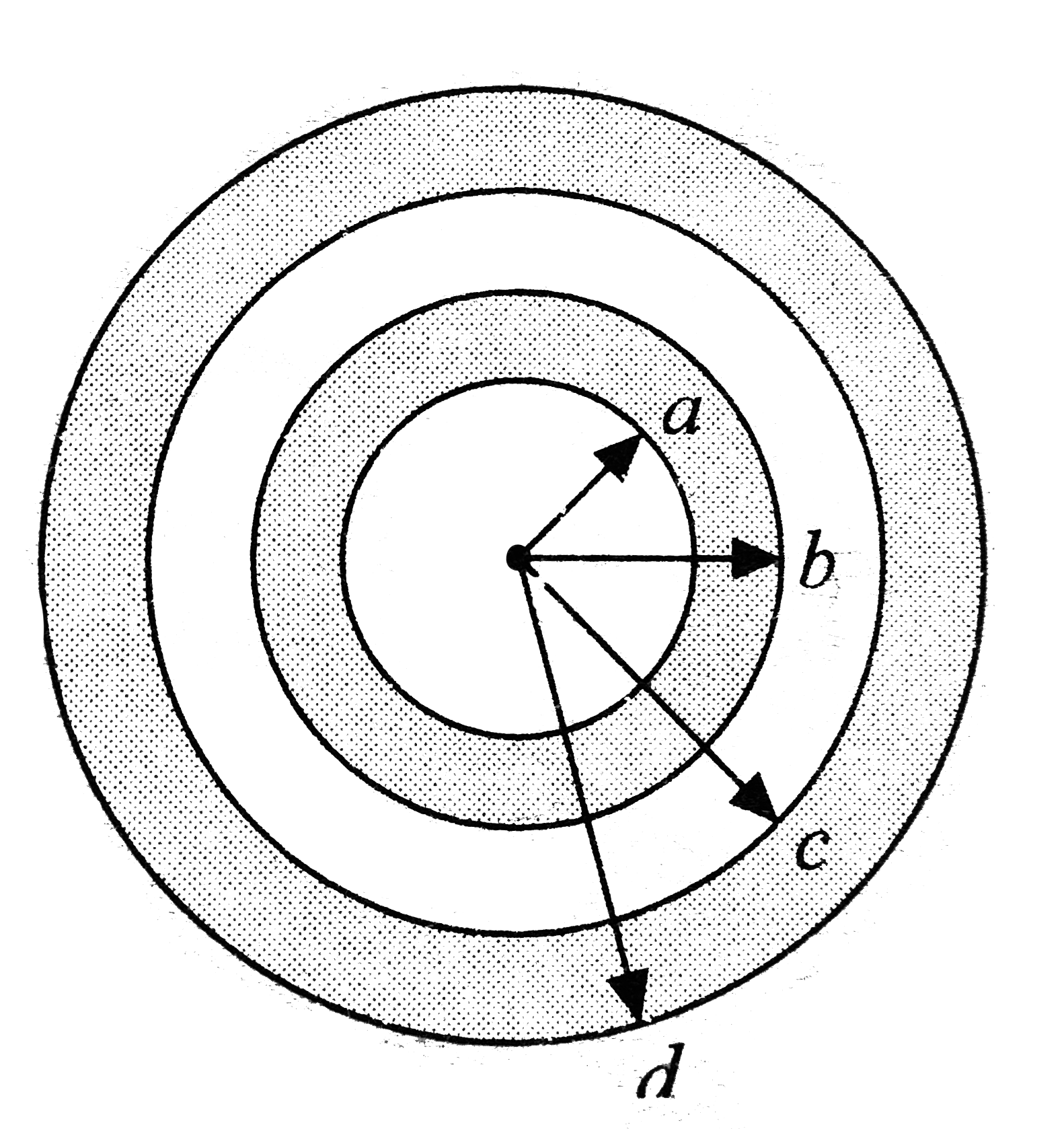
Charge distribution
(a) Total charge on inner shell
Total charge on outer shell
Charge distribution :
(i) Charge on inner surface of inner shell
(ii) Charge on outer surface of inner shell
(iii) Charge on inner surface of outer shell (facing surfaces have equal and opposite charges)
(iv) Charge on outer surface of outer shell
(total charge on outer shell is )
(b) To calculate electric field , draw a sphere with centre through that point where electric field is required. Assume charge to be concentrated at centre and apply formula of point charge.
(i) , enclosed charge
(ii) , enclosed charged or electric inside conductor
(iii) , enclosed charge
(iv) , enclosed charge , or electric field inside conductor
(v) , enclosed charge

Topper's Solved these Questions
Similar Questions
A small conducting spherical shell with inner radius a and outer radius b is concentric with a larger conducting sphereical shell with inner radius c and outer radius d. The inner shell has total charge +2q and the outer shell has charge +4q.
a. Make a plot of the magnitude of the electric field versus r.
b. Calculate the electric field (magnitude and direction in terms of q) and the distance r from the common centre of the two shell for (i)r<a,(ii)a<r<b,(iii)bltrltc,(iv)cltrltd,(v)rgtd.Showuourrest–∈agraphwithradialcompo≠ntofvecEasfunctionofr.
c. What is the total charge on the
i. inner surface of the small shell,
ii. outer surface of the small shell,
iii. inner surface of the large shell,
iv. outer surface of the large shell?View SolutionWhat is the volume of the material in a spherical shell with inner radius ‘r' and outer radius 'R' ?
View Solution
Knowledge Check
- Question 1 - Select One
A small conducting spherical shell with inner radius a and outer radius b is concentric with a larger conducting spherical shell with inner radius c and outer radius d ( as shown in Fig . 2.121). The inner shell has a total charge +2q, and the outer shell has a total charge +4q. Calculate the electric field in terms of q and the distance r from the common center of the two shells for
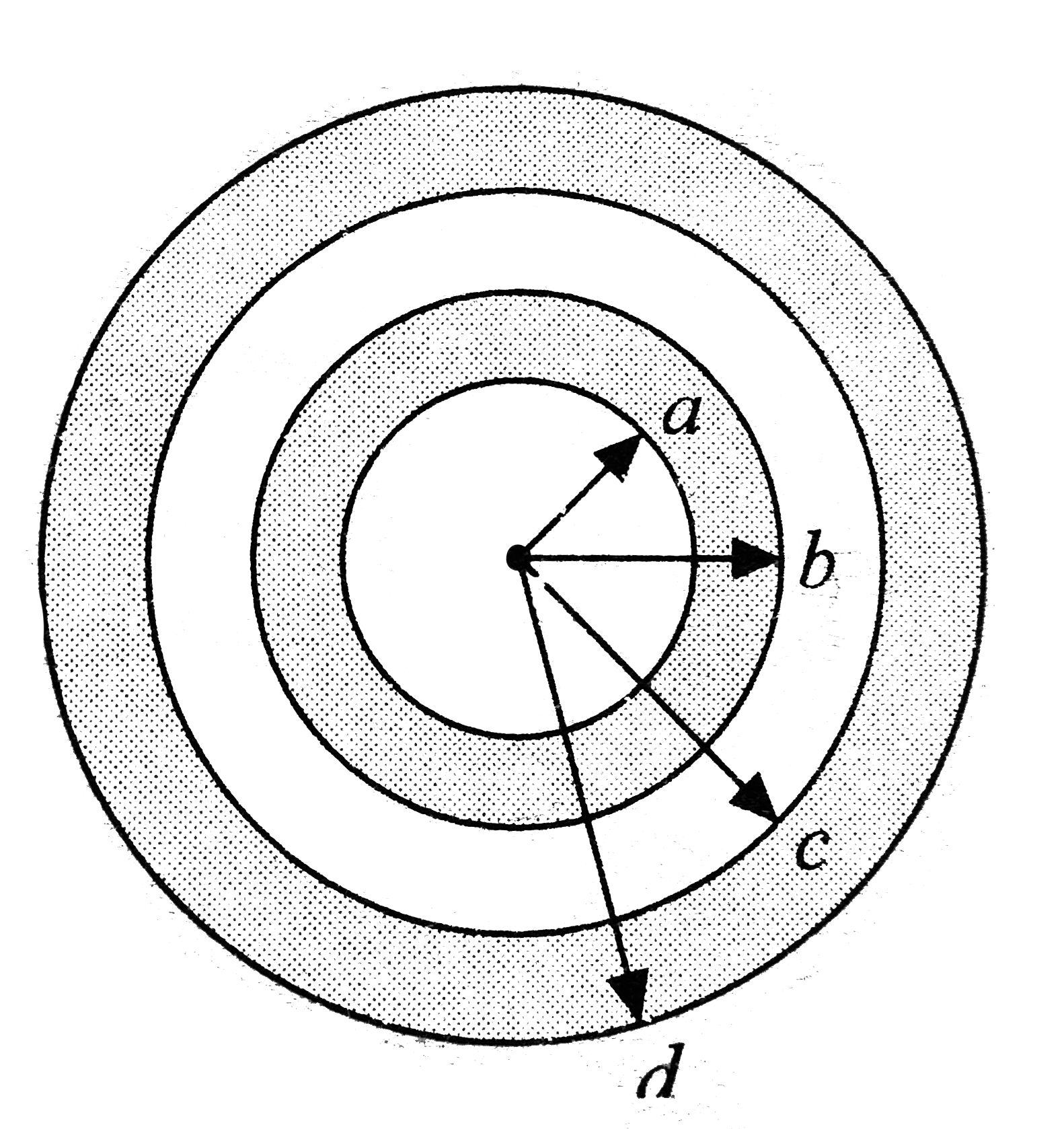
r>dAzeroB14πε02qr2C−14πε06qr2D14πε0qr2 - Question 2 - Select One
A small conducting spherical shell with inner radius a and outer radius b is concentric with a larger conducting spherical shell with inner radius c and outer radius d ( as shown in Fig . 2.121). The inner shell has a total charge +2q, and the outer shell has a total charge +4q. Calculate the electric field in terms of q and the distance r from the common center of the two shells for
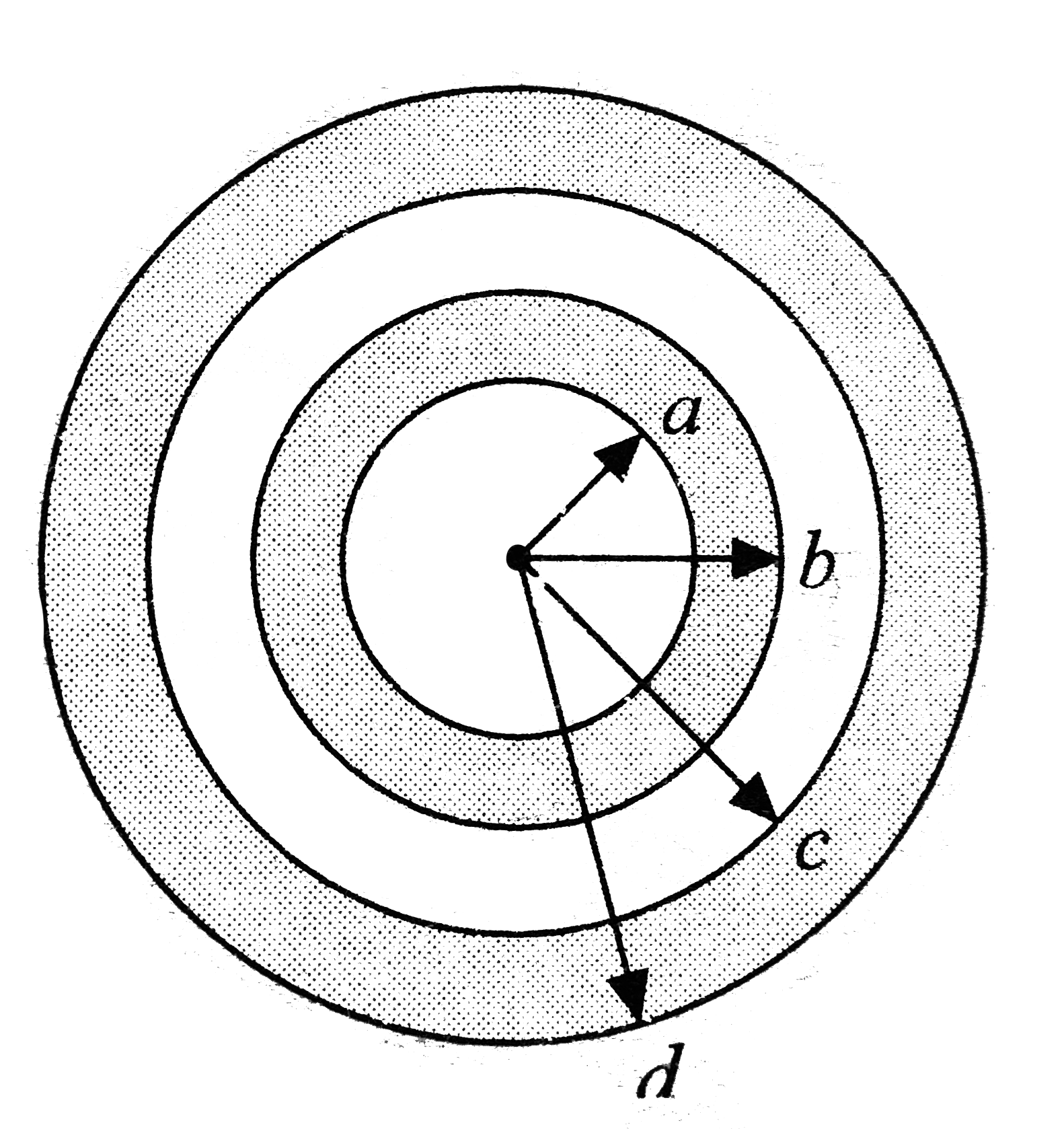
c<r<dAzeroB14πε02qr2C−14πε06qr2D14πε0qr2 - Question 3 - Select One
A small conducting spherical shell with inner radius a and outer radius b is concentric with a larger conducting spherical shell with inner radius c and outer radius d ( as shown in Fig . 2.121). The inner shell has a total charge +2q, and the outer shell has a total charge +4q. Calculate the electric field in terms of q and the distance r from the common center of the two shells for
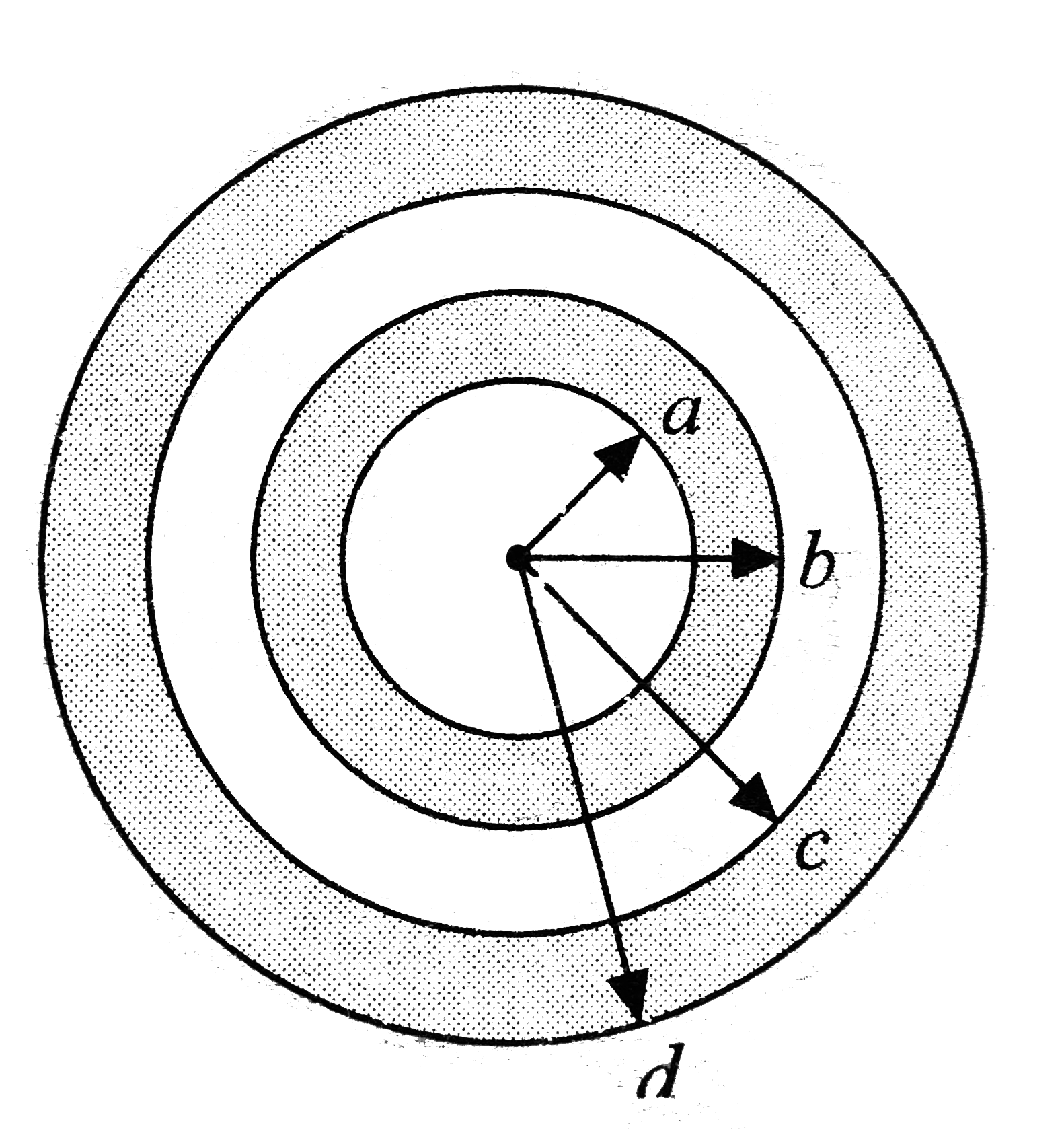
a<r<bAzeroB14πε02qr2C−14πε06qr2D(1)/( 4 pi epsilon_(0)) (q)/( r^(2))
A small conducting spherical shell with inner radius a and outer radius b is concentric with a larger conducting spherical shell with inner radius c and outer radius d ( as shown in Fig . 2.121). The inner shell has a total charge +2q, and the outer shell has a total charge +4q. Calculate the electric field in terms of q and the distance r from the common center of the two shells for

r<aView SolutionA small conducting spherical shell with inner radius a and outer radius b is concentric with a larger conducting spherical shell with inner radius c and outer radius d ( as shown in Fig . 2.121). The inner shell has a total charge +2q, and the outer shell has a total charge +4q. Calculate the electric field in terms of q and the distance r from the common center of the two shells for
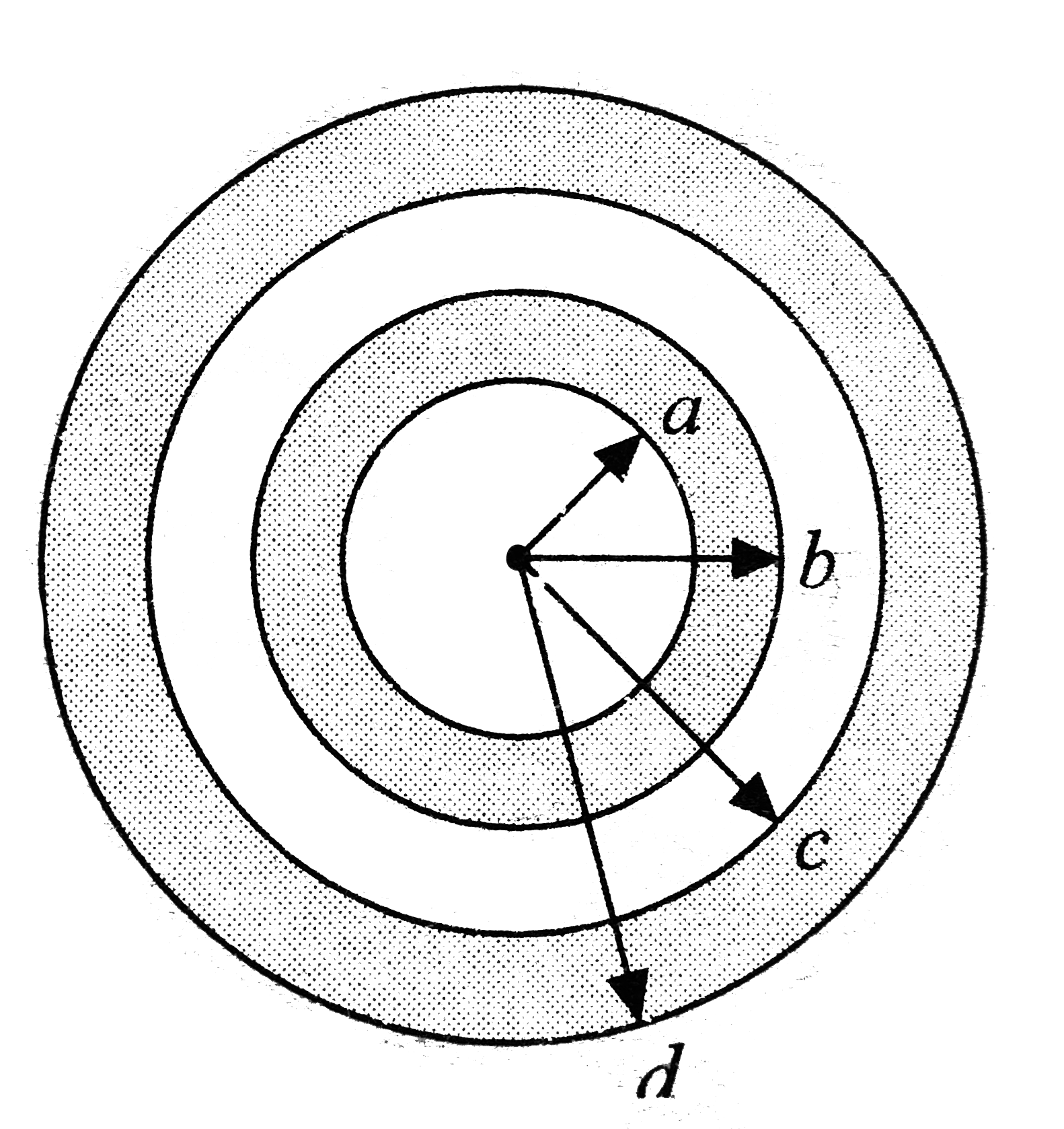
The graph of the radial component of E as a function of r will beView SolutionConsider the previous problem , let the outer shell have the charge −4q. As in the above problem , the inner shell has the charge +2q. Calculate the electric field in terms of q and the distance r from the common center of the two shells for
b<r<cView SolutionConsider the previous problem , let the outer shell have the charge −4q. As in the above problem , the inner shell has the charge +2q. Calculate the electric field in terms of q and the distance r from the common center of the two shells for
c<r<dView SolutionConsider the previous problem , let the outer shell have the charge −4q. As in the above problem , the inner shell has the charge +2q. Calculate the electric field in terms of q and the distance r from the common center of the two shells for
a<r<bView Solution

